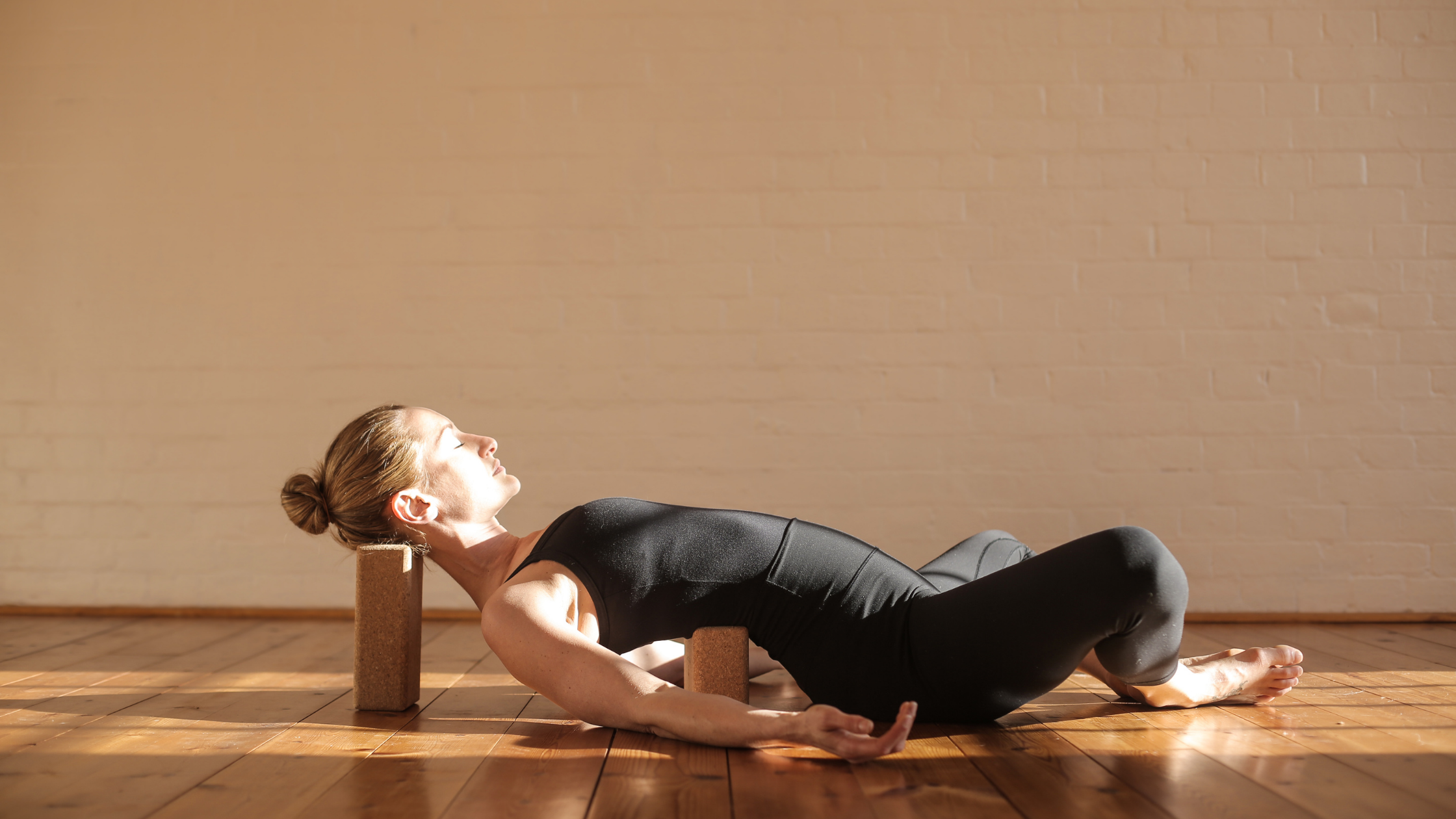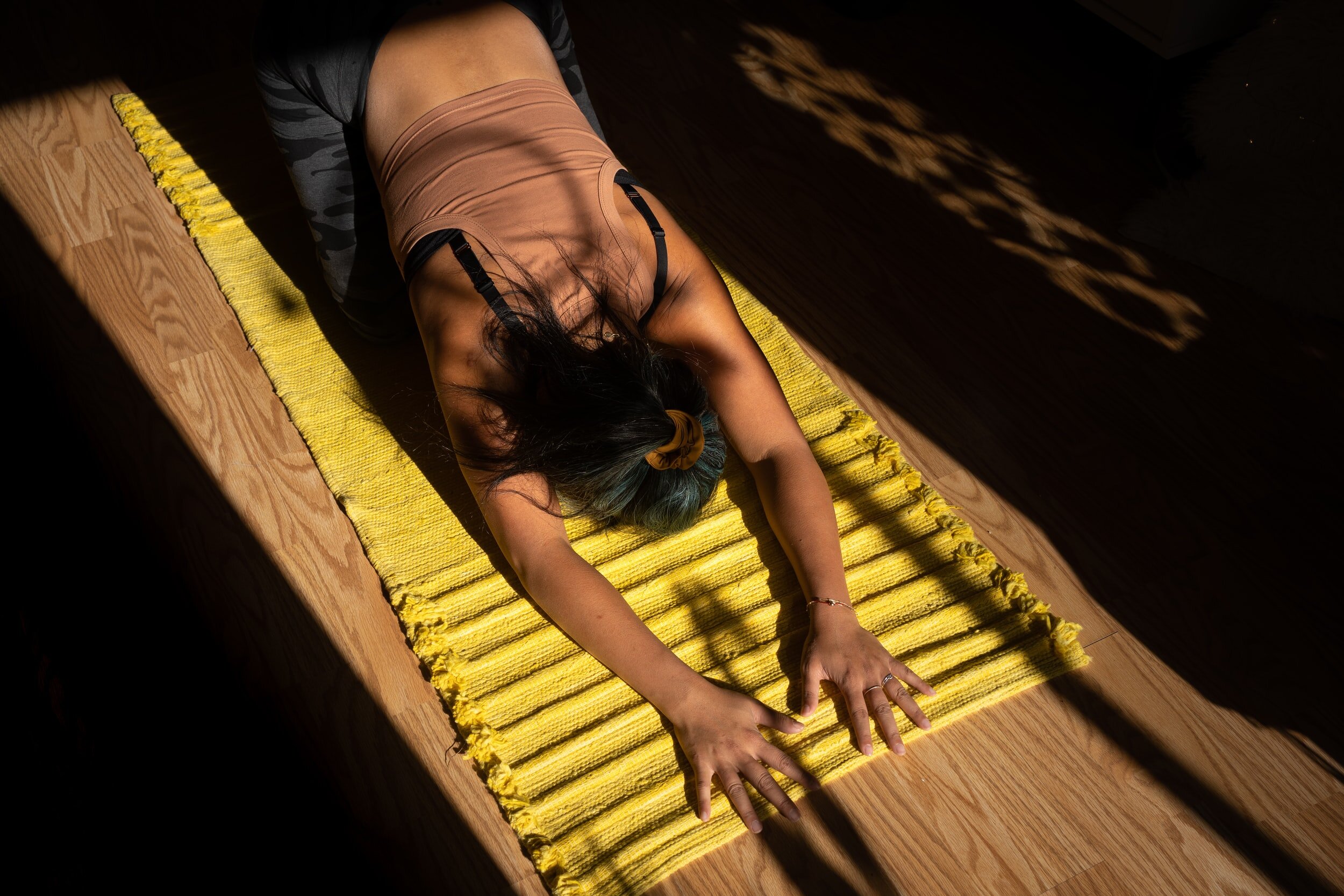Restorative Yoga - what's it all about?
Online Yoga is here to stay so could Restorative Yoga be the perfect antidote to the uncertainty and stress in so many people’s post pandemic lives?
In this climate of heightened anxiety, Yoga has found its place at the heart of mainstream self care. Whether or not people come to a Yoga class searching for spiritual enlightenment, an endorphin high or increased flexibility, if they’ve found a decent Yoga teacher, the chances are they’ll leave the mat feeling happier than when they first started the class.
So what does Restorative Yoga mean and what makes this style of Yoga so special?
RESTORATIVE [rɪˈstɒrətɪv]
Adjective
having the ability to restore health, strength, or well-being.
"the restorative power of long walks"
synonyms:
invigorating · refreshing · stimulating · energizing · exhilarating · enlivening
Sounds like something most people would sign up for, right? Well that’s certainly one of the draws of training to teach such a thoroughly rewarding style of Yoga, but how does Restorative Yoga differ from other popular Yoga classes?
Restorative Yoga uses a series of props; blankets, straps and blocks, to enable a smaller number of poses or asanas to be held for five minutes or more. The benefit being that this encourages deeper physical, emotional and mental relaxation and makes the class accessible to everyone from the beginner to the veteran Yogi.
Taken at a slower pace, Restorative Yoga focuses intently on breath, stillness and mindfulness and shies away from the Yang aspects of Vinyasa or Bikram.
Restores Health
Restorative Yoga centres around slow and elongated poses that are designed to stimulate different parts of the parasympathetic nervous system.
This incredible communication network ensures that the automatic mechanisms of the body operate at lightening speed and maintains, the basic and essential functions of the body.
It controls aspects of the respiratory, digestive and sensory systems to name just a few and in its simplest of terms, manages how our bodies automatically react to stimuli such as pain, fear and pleasure.
So how does Restorative Yoga positively impact upon the body’s basic communication system?
By using props such as blankets, straps and blocks to support the body to maintain poses for longer, Restorative Yoga allows the body to reach a deeper state of relaxation and thereby shift the balance away from the adrenal system (fight and flight response) and enhance the performance of the parasympathetic nervous system.
By boosting the performance of the parasympathetic nervous system, Restorative Yoga can help to reduce chronic pain in a safe and supported way.
As an accessible Yoga style, it also enables beginners and those with acute or chronic injuries to develop their Yoga practice without risk of over-exertion or injury.
Furthermore, the Royal College of Obstetricians & Gynaecologists ranks gentle prenatal yoga as one of the safest ways to exercise during pregnancy.
Add to this the impact of relaxation upon good quality sleep and associated benefits for the immune system and you can see why Restorative Yoga has a powerful role to play in restoring health.
Restores strength
Western Yoga has taken a nose dive into the more aerobic and athletic styles of practice over recent years. The trend has shifted towards hot, hatha, and vinyasa flow classes which demand more of the muscular and skeletal systems. Whilst these more intense classes focus on engagement and flexibility, Restorative yoga is a completely different experience. That is not to say it does not offer equal potential benefits for the body.
Maintaining supported asanas for longer periods of time invites deep relaxation and although aided by props, it gently builds muscle tone, core strength and integrity. Restorative Yoga is also more gentle on the body’s joints, and regular practice can aid the resilience and strength of the connective tissues that surround the bones and joints.
By developing the ability to breathe and bring awareness to tension, Restorative practitioners develop mechanisms to relax tightness and increase balance, thereby increasing the body’s resilience and strength over time.
By managing the levels of cortisol flooding the body when exertion is applied in prolonged asanas, Restorative practitioners build the skills required to progress to more demanding and revitalising poses across all styles and traditions of Yoga, all thanks to the muscular and skeletal integrity that this style of Yoga develops.
As the Restorative Yoga practice develops, practitioners may be able to extend the length of the asanas from 5 minutes to 20 minutes and sometimes for longer. They may also be able to reduce the amount of props they use to support such poses; in so doing they increase their flexibility and strength and tolerance for countless other forms of exercise.
Restorative Yoga has huge potential for restoring strength to practitioners of all levels of physical ability and experience.
Restores wellbeing
Restorative Yoga focuses on relaxation, deep breathing and mindfulness. By bringing attention to areas of tension and developing ways to reduce and relax physical tightness and emotional blockages; the practice is a perfect antidote to stress and anxiety.
Practiced using supportive props and blankets, Restorative practitioners are cocooned in a safe and inviting space. As the progression through the asanas is slow and meditative, there is little opportunity for comparison with studio peers and the practice is wholly individual.
Removing the blockers to ability and thereby the associated inner judgment monologue, heightens the experience of relaxation and allows the practitioner to draw their focus inwardly. This in turn enables them to develop new ways to counter their own negative thoughts or stress interruptions.
As regular practice is easier when the timetable and venue hurdles are removed, Restorative Yoga practice is easily replicable at home and therefore the potential to deepen practitioners’ understanding of the process of relaxation and meditation increases.
Developing this routine has huge potential for improving the quality of sleep and good sleep is directly linked with improved mood and reduced depressive symptoms. In addition to reduced anxiety, practising Yoga regularly results in less fatigue, more energy, improved wellbeing and positivity.
Restorative Yoga has huge potential to restore wellbeing to people from all walks of life, and all levels of physical and mental health.
We’re excited to announce that a new Academy for Yoga Teacher Training Restorative Course is nearing completion!
In this climate of heightened anxiety, Yoga has found its place at the heart of mainstream self care. Online Yoga is here to stay and Restorative Yoga is the perfect antidote to the uncertainty and stress in so many people’s post pandemic lives.
We cannot wait to launch this course.
If you’d like to be the first to hear about this new YTT course, dates and offers, then sign up to our mailing list by clicking the button or filling in the form at the bottom of this page.





